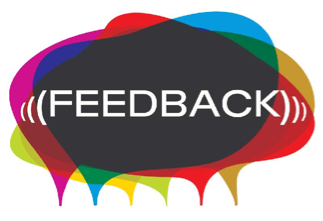image: www.anteres.fr
We are preparing for the NYS TESOL conference here at Rennert, so for the blog this week I thought I would share something we are working on for the conference. Right now I am finishing up a session entitled Enriching Teachers: Strategies for Guiding Teachers to Deeper Self-Reflection. This session will focus on specific strategies that the observer can use to help support him/her through the reflective process with the teacher. Hopefully you will be able to join us in Albany, but if not here is a little taste of the session :).
In my experience, I have found that there are a few essential steps to effective pre- or in- service observation and feedback:
Step 1: Plan for the observation
Step 2: Observe the teacher
Step 3: Prepare for the feedback session
Step 4: Facilitate feedback and manage self-reflection
Step 5: Follow up with the teacher (if necessary)
These steps can take different incarnations depending on the context of your observation (a teacher training course, a yearly teacher observation, etc…), but I find that certain things hold true.
Let’s start with step 1: planning for the observation. This often includes a formal or informal meeting with your teacher in which you can both plan on what will be focused on during the observation. This can mean that the teacher asks you to focus on some things and/or you can inform the teacher of some things that you’ll be looking for while observing. There are quite a few benefits to doing this. First. it takes the mystery out of the observation for the teacher. It also helps you (the observer) pare down what you will be looking for so you can take more effective notes. It also empowers the teacher by making him/her an active part of the observation process.
Moving on to step 2, there are a few things you can do to make the observation go a little bit more smoothly for yourself. Utilizing the planning stage can help you pay attention to really key things so that you don’t get bogged down trying to notice everything. Also, make sure to write down as much student action and reaction as possible in your observation notes. This will give you the description you need to bring to the table in order to help your teacher develop reflective skills. Lastly, I know many of us love the feel of pen on paper, but consider typing your notes while you observe; it really saves so much time!
Next, to prepare for the feedback session (step 3) you’re going to want to make sure to highlight the important description you want to bring up to the teacher. This will make it stand out so it is easier to refer to your notes. After you have your description organized, prepare some guiding questions to help you lead the teacher to discover the key issues. It can be hard to think of good guiding questions on the spot, so support yourself by bringing prewritten ones to get the ball rolling. Also, you may have your teacher journal a bit or fill out a post observation form before the meeting to keep the lesson fresh in their mind. This also means the teacher has ideas to bring to the table.
For step 4, I often advise people to follow a specific order of questioning during the feedback session. You want to keep the flow of feedback as natural as possible and you need to adapt the session to account for what your teacher notices, but consider this order:
- Allow the teacher to speak first and share her ideas about the lesson in general.
- Then use the pre observation the post observation forms to help guide the reflection.
- When you want to explore a point to encourage self-reflection, ask the teacher a guiding question.
- If the teacher can’t answer, provide supporting description and ask another guiding question.
- If they still can’t answer, as a last resort, provide direct feedback.
Lastly, step five is the follow up. Following up with the teacher after feedback can be as simple as an informal chat in the hallway. However, it can also be as in depth as another observation followed by a feedback session. It really depends. Either way, it is important to have some kind of follow up to build a culture of accountability with your teachers.
I hope you found these tips helpful. Please feel free to share your current observation and feedback process in the comments. I would love to hear your ideas!
If you like what you read, come to our session at the NYS TESOL conference in Albany next week. I will be posting more details about this on Twitter so stay tuned :).

